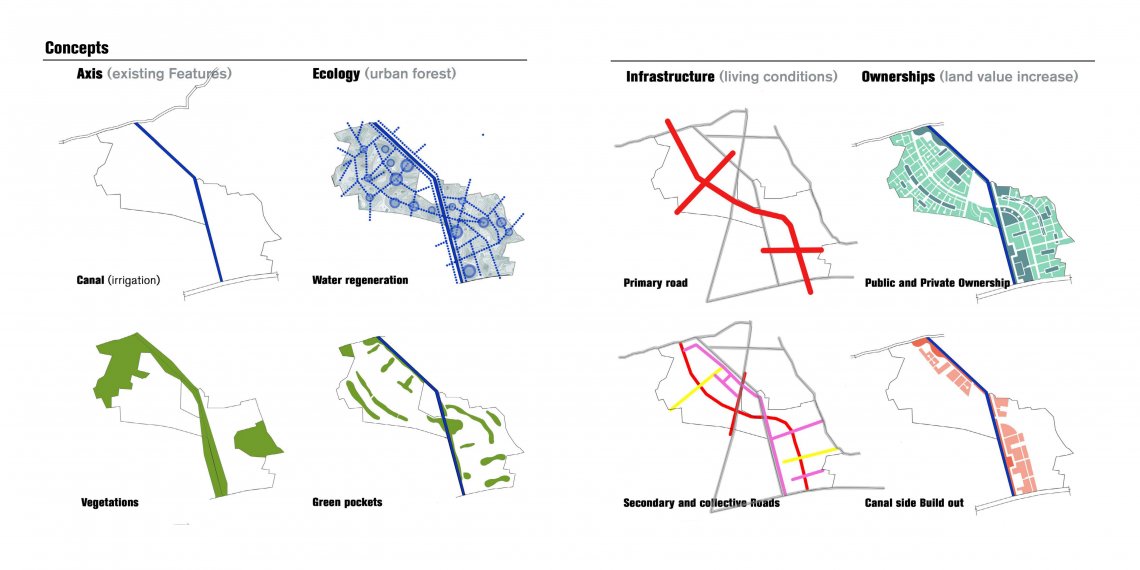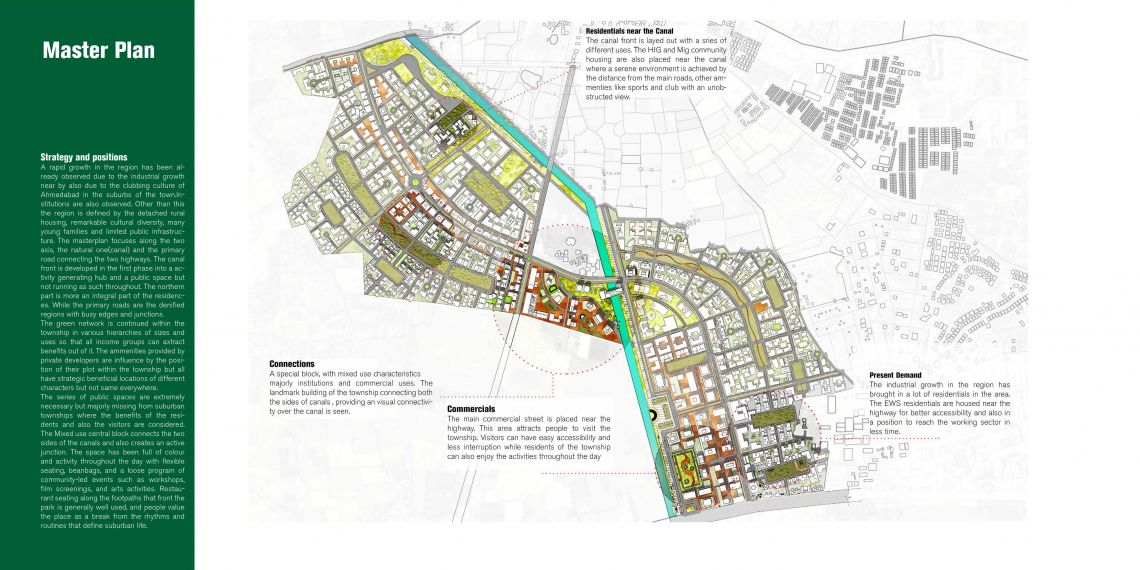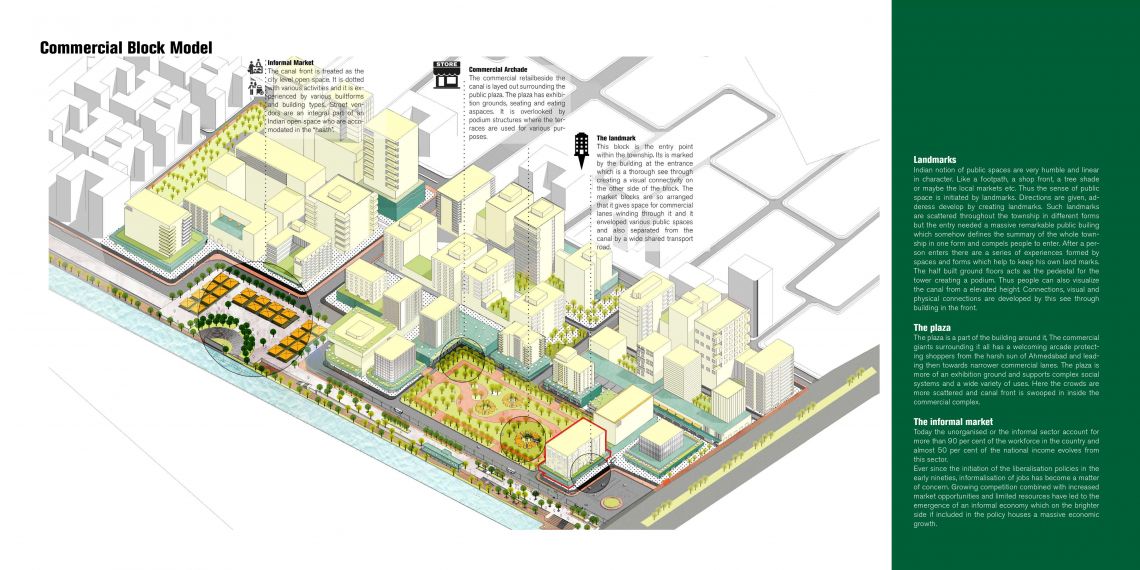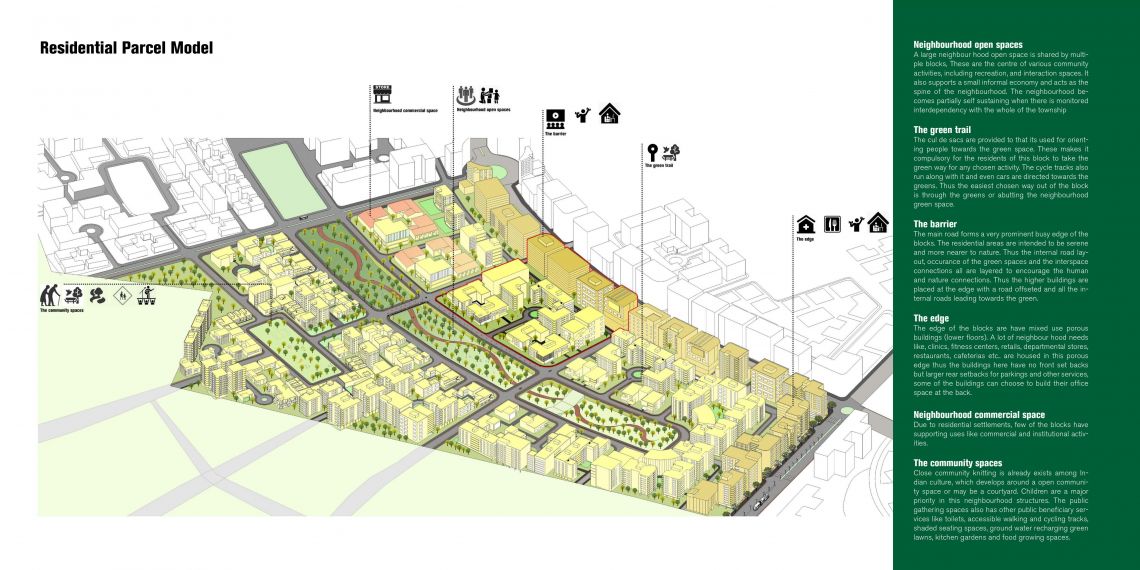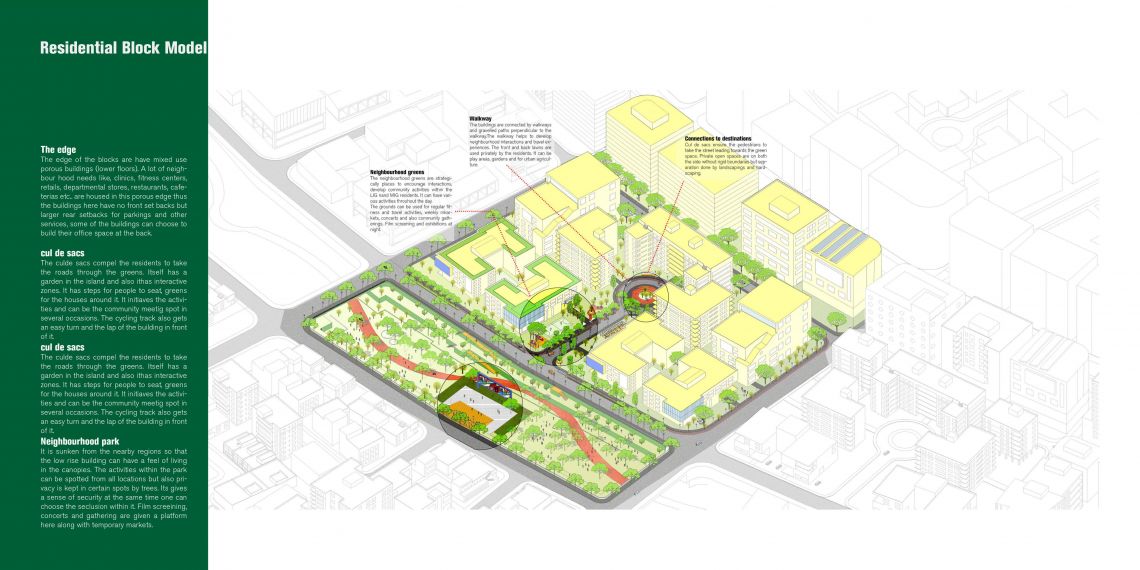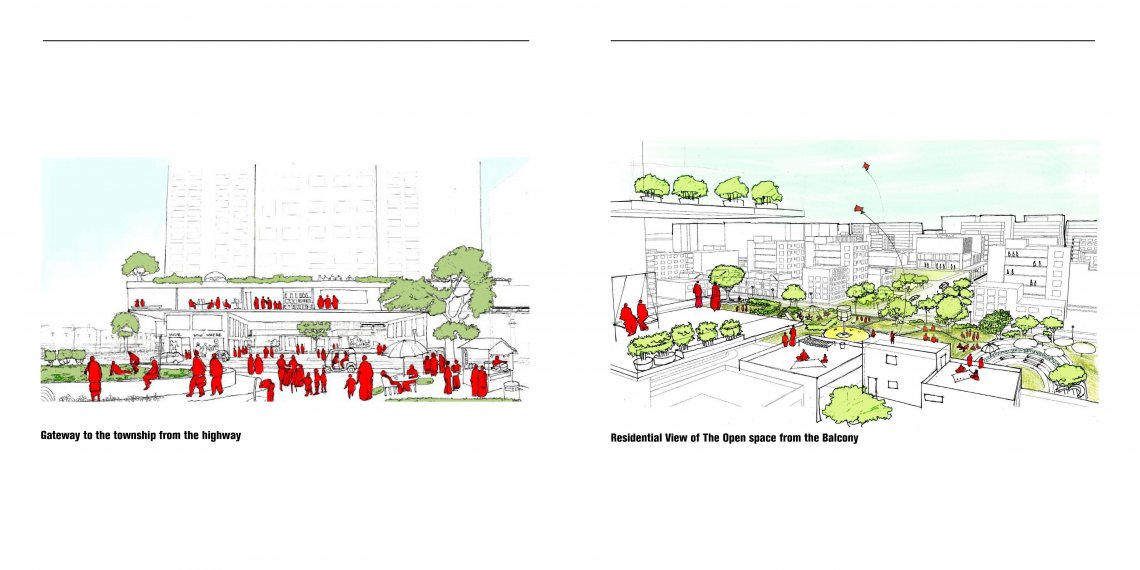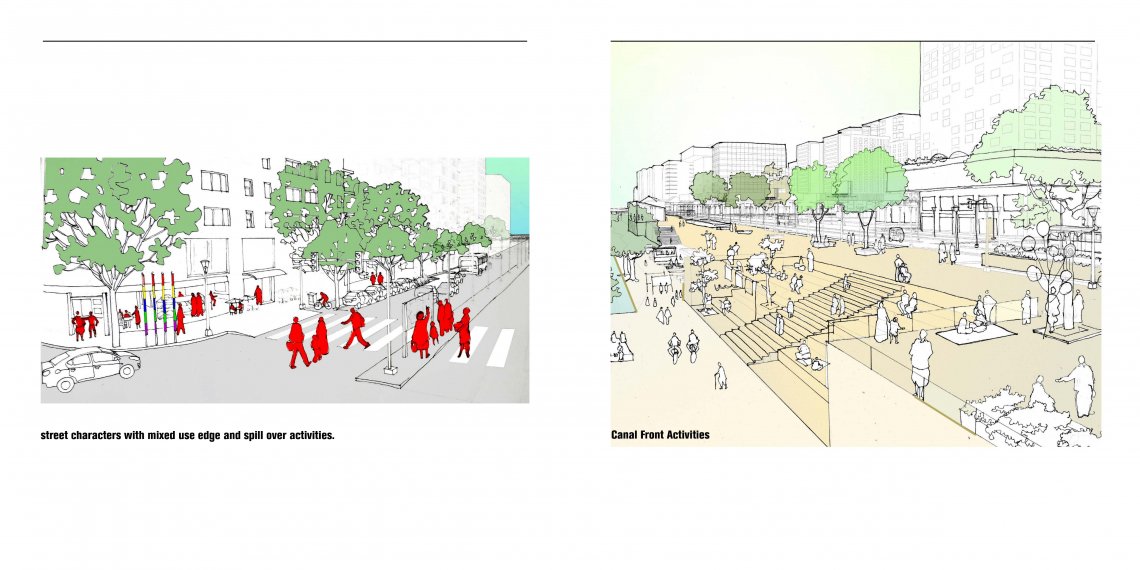Your browser is out-of-date!
For a richer surfing experience on our website, please update your browser. Update my browser now!
For a richer surfing experience on our website, please update your browser. Update my browser now!
India as a nation rising to the Phase ii stage of development has been observed going through massive transformations. Urbanization is one of the major changes observed throughout the last thirty years. Regulated urbanisation has been neglected thus rural land decrease and agricultural land deprivation has been observed along with it. Urbanization on the other hand is very necessary to serve the ongoing population growth of the country. New cities are developing is different states but mostly old city fringes are developing. The biggest criticism these areas face of are being urban sprawls with less public amenities. This studio has been designed to introduce students to a new idea of urban expansions and dealing with greenfield projects. Here the township development which was given as the exercise has been treated as an individual sustainable city development along with less dependency about housing matters on the main city, at the same time being aware that it is not being built on a blank slate. It has to be engaged in the existing city and should stimulate future growth in the same pattern. It develops along with its own activity generators keeping in mind the basic necessities of Indian people which they gather from an urban settlement. Theses activity generating regions are of various kinds with institutions, commercials, residential neighbourhood, industrial as well as recreational as the main parts of it. The cross over infrastructure also occupies more than 20% landholding of the site which also includes the land holdings for sewage treatments, existing water runoff ground and the heavy vegetations existing in the land. The research for the site of Shela township has been to keep alive the existing vast landscapes and how to introduce high-density active zones within it which also encourages urban agriculture as well as the security system of modern towns without forming it into a gated society. Communities can only then infuse with places and find new layers of meaning, creating a sense of ownership and stewardship.

